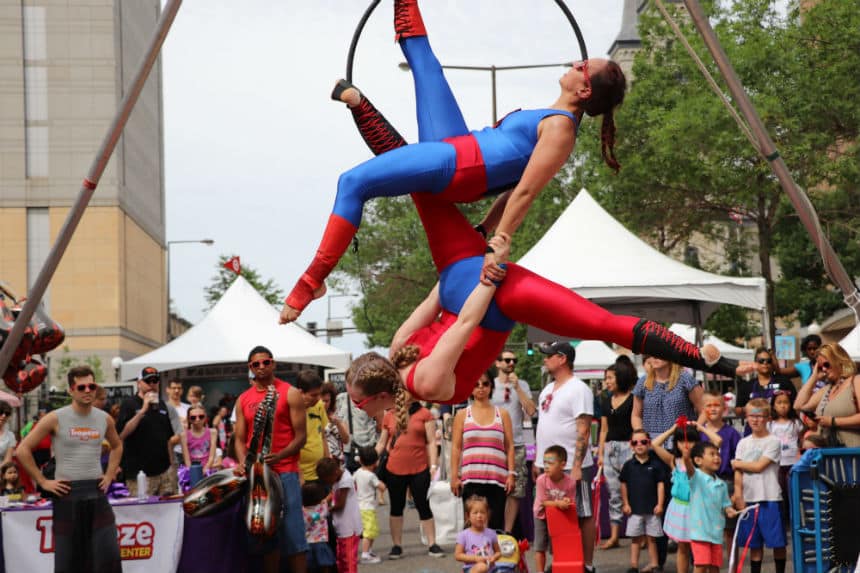Physical Activity Doesn’t Only Mean Sports – Play, More Minnesota!

Parents know intimately how every child is unique. One sleeps well, two refuse to nap, all of them dislike raisins for completely different reasons. The same, of course, applies to physical abilities. After all, very few kids grow up to be WNBA champions, like Minnesotan, Lindsay Whelan.
As kids get older, the natural athletes likely join a dance group or pursue a favorite sport or two. But what about those kids who don’t like sports or simply are not well-coordinated? How can parents help their kids get the recommended 60 minutes of physical activity every day? The answer is to make it fun and enjoyable. Budding biologists might enjoy a hike in the woods to flip over decaying logs and count the bugs. Your resident jokester might take a liking to improv classes. But don’t forget about pick-up games of hide-n-seek and visits to the park or Minnesota Children’s Museum.
Play is often very physical. Keep that idea in mind as you seek to encourage physical activity in your children.



Grade Schoolers
At this age, present a variety of games, activities and places to play. Fun is your objective. Make sure to give your kids a voice in the decisions, as well. Are they huge fans of the carpet skate in Super Awesome Adventures? There’s no harm in spending a few hours there! Seriously, imagine the coordination improvement. When kids are enjoying an activity, they’ll do it more, get better at it and feel proud of themselves. The individual physical skills they develop through open-ended play at this age will combine later in into more complex and fluid actions like bending in a plié, brushing the floor in a tendu and leaping in a jèté or scooping up a ball and throwing it fluidly to first base as a young teen.
Tweens
When suggesting things to do, be sure to consider your child’s temperament in addition to their natural abilities and interests. Your family jokester might enjoy the pace and drama of soccer, but find the concentration required in martial arts just too much. Regardless of the activity, if your kid isn’t having fun or feels frustrated, it might be time to expose them to something else. The time spent wasn’t wasted, all the skills we develop help us down the road. I wasn’t a successful ballerina, but the flexibility I developed during years of ballet classes makes yoga fun and easy today. Don’t think they’re too old for the museum, either. We see plenty of tweens trying not to look like they’re having fun — especially in the spinning chairs on The Landing or in The Scramble. (I’ll give you a hint, the spinning chairs are an awesome core workout!)
Parents have enough to worry about. Let’s just agree to make physical activity fun!

